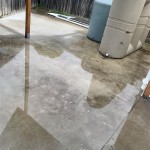How To Install Patio Pavers: A Comprehensive Guide
Patio pavers offer a durable, aesthetically pleasing, and versatile option for creating outdoor living spaces. Installing them, while requiring some physical effort, can be a rewarding DIY project with the potential to enhance property value and enjoyment. This comprehensive guide outlines the steps involved in properly installing patio pavers, ensuring a long-lasting and visually appealing result.
Planning and Preparation: Laying the Groundwork for Success
Before any physical labor begins, meticulous planning is crucial. This stage involves assessing the project area, determining the appropriate materials, and preparing the site for paver installation. Skipping or shortchanging this phase can lead to structural issues and aesthetic compromises later on.
The first step in planning is to define the patio area. This involves clearly marking the desired boundaries using stakes and string. The size and shape of the patio will directly influence the amount of materials needed, as well as the complexity of the installation process.
Next, consider the existing landscape and drainage patterns. The patio should ideally slope slightly away from the house to facilitate water runoff. If existing drainage is inadequate, incorporating drainage solutions like French drains or surface drains may be necessary. This planning needs to adhere to local building codes and regulations, which can vary significantly. Contacting the local building department is advisable to ensure compliance.
Choosing the right paver material is another critical aspect of planning. Pavers are available in various materials, including concrete, brick, natural stone, and permeable options. Concrete pavers are generally the most cost-effective and offer a wide range of styles and colors. Brick pavers provide a classic, rustic look. Natural stone pavers offer unique textures and colors but tend to be more expensive. Permeable pavers allow water to drain through the surface, reducing runoff and potentially mitigating drainage issues.
Calculating the amount of materials required involves determining the square footage of the patio area. Add an extra 5-10% to account for cuts and breakage. In addition to pavers, the project will require base material (usually compacted gravel), bedding sand, edge restraints, and joint sand. The amount of base material needed depends on the soil type and the intended use of the patio. For pedestrian traffic, a base of 4-6 inches is typically sufficient. For patios that will support vehicular traffic, a thicker base of 8-12 inches is recommended. Bedding sand should be approximately 1 inch thick.
Finally, gather the necessary tools and equipment. Essential tools include a shovel, rake, tamper, level, measuring tape, wheelbarrow, safety glasses, work gloves, a circular saw with a masonry blade (for cutting pavers), a rubber mallet, string line, stakes, and a broom. Renting a plate compactor can significantly expedite the compaction process and ensure a stable base.
Site Excavation and Base Preparation: Building a Solid Foundation
Proper site excavation and base preparation are fundamental to the longevity and stability of the paver patio. A well-prepared base provides a level and compacted surface that supports the pavers and prevents settling over time.
The first step is to excavate the area to the required depth. This depth is determined by adding the thickness of the pavers, the bedding sand, and the base material. For example, if the pavers are 2 inches thick, the bedding sand is 1 inch thick, and the base material is 6 inches thick, the total excavation depth should be 9 inches. Use a shovel and wheelbarrow to remove the excavated soil from the area.
Once the excavation is complete, compact the subgrade (the underlying soil) using a plate compactor or hand tamper. This step is crucial for creating a stable foundation and preventing future settling. Ensure the subgrade is level and free of any large rocks or debris.
Next, install the base material. This typically consists of compacted gravel, such as crushed stone or recycled concrete aggregate. Spread the base material evenly over the excavated area and compact it in layers, typically 2-3 inches at a time. Use a plate compactor for optimal compaction. After each layer, check the level using a level and adjust as needed. Maintaining a consistent slope for drainage is essential.
Edge restraints are necessary to prevent the pavers from shifting over time. These can be made of plastic, metal, or concrete. Install the edge restraints around the perimeter of the patio area, ensuring they are securely anchored in place. Follow the manufacturer's instructions for proper installation. The top of the edge restraints should be level with the finished paver surface.
After installing the edge restraints, add a final layer of base material and compact it thoroughly. This final layer should be level and smooth, providing a solid foundation for the bedding sand.
Laying the Pavers and Finishing Touches: Creating the Desired Aesthetic
With the base properly prepared, the next step involves laying the pavers in the desired pattern. This phase requires attention to detail to ensure consistent spacing, proper alignment, and a visually appealing result. Subsequent finishing touches will further enhance the patio's durability and aesthetics.
Spread a layer of bedding sand over the compacted base material. The sand should be approximately 1 inch thick and evenly distributed. Use a screed board (a straight piece of wood or metal) to level the sand. Drag the screed board across the surface, removing any excess sand and filling in any low spots. The goal is to create a smooth, level surface for the pavers to rest on.
Begin laying the pavers, starting from one corner or edge of the patio area. Follow the chosen paver pattern, ensuring consistent spacing between the pavers. Use paver spacers or a string line to maintain consistent spacing. Gently tap each paver into place with a rubber mallet, ensuring it is level with the surrounding pavers. Periodically check the level using a level and adjust as needed.
When encountering obstacles, such as walls or curves, it may be necessary to cut the pavers to fit. Use a circular saw with a masonry blade to cut the pavers to the desired shape. Wear safety glasses and a dust mask when cutting pavers to protect yourself from dust and debris.
After all the pavers have been laid, sweep joint sand over the surface of the patio. The sand should fill the gaps between the pavers, providing stability and preventing weeds from growing. Use a broom or brush to work the sand into the joints. Repeat this process several times to ensure the joints are completely filled.
Finally, compact the pavers using a plate compactor with a rubber pad. This will help to settle the pavers into the bedding sand and lock them together. After compacting, sweep any excess sand off the surface of the patio. Consider applying a paver sealer to protect the pavers from staining and weathering. Follow the manufacturer's instructions for proper application.
Regular maintenance, such as sweeping and occasional cleaning, will help to keep the patio looking its best for years to come. Repair any damaged or cracked pavers promptly to prevent further deterioration.

How To Build A Patio That Will Last Lifetime Easton Outdoors

How To Build A Paver Patio Young House Love

We Built A Paver Patio Like Pro Start To Finish

How To Install A Diy Paver Patio The Easy Way Angela Marie Made
.jpg?strip=all)
How To Install Patio Pavers Lv

How To Install Pavers Installing A Patio Step By Guide

Take The Fun Outside With A Paver Patio Seattle Times

How To Square Screed Lay A Paver Patio

Paver Installation Landscaping Network

How To Install A Diy Paver Patio The Easy Way Angela Marie Made
Related Posts








